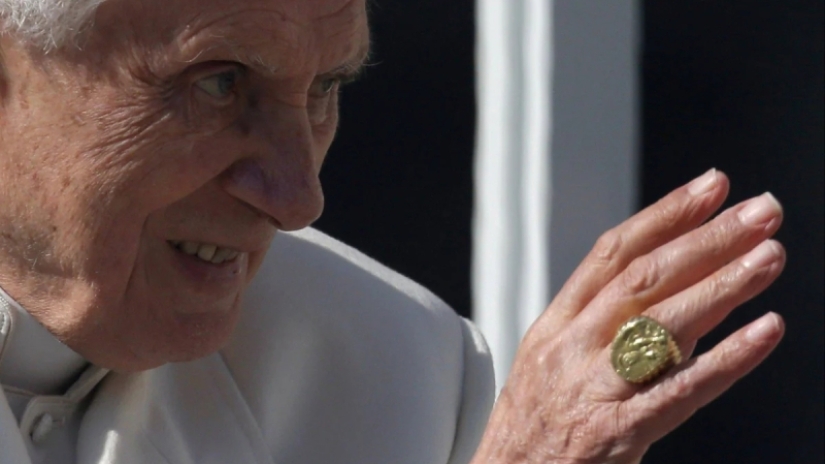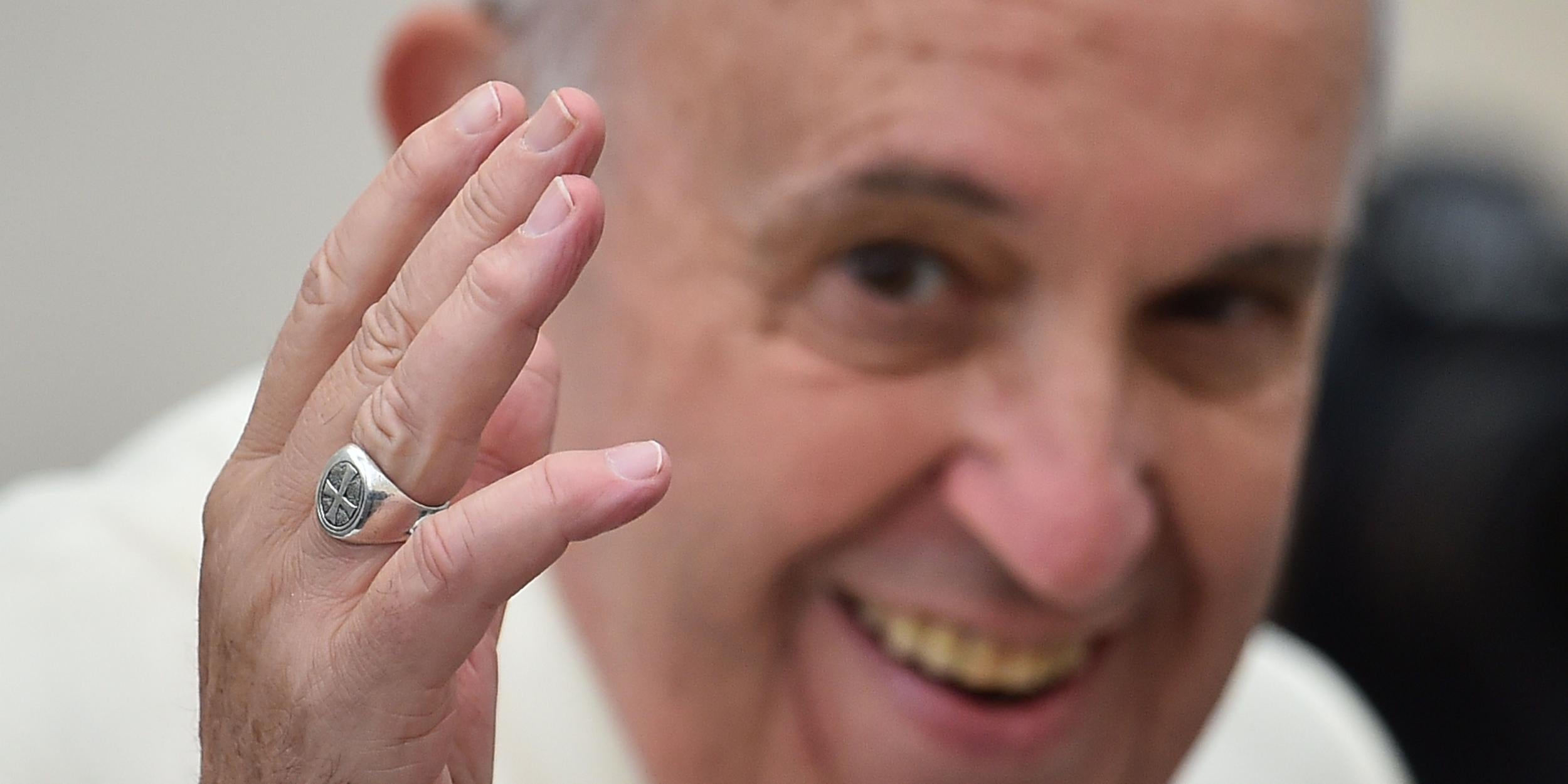Understanding The Tradition: Why The Pope's Ring Is Destroyed Upon Death

Table of Contents
The Symbolism of the Fisherman's Ring
The Fisherman's Ring, also known as the Anulus Piscatoris, boasts a rich history intertwined with the very foundations of the papacy. Its origins trace back to the early Church, symbolizing the papal office and its connection to St. Peter, the first Pope, a humble fisherman called by Christ to be the "rock" upon which the Church would be built. The ring itself usually depicts St. Peter fishing, a powerful visual representation of his humble origins and divine calling.
The ring served a crucial practical purpose: it was used to seal papal documents, lending them authenticity and authority. The act of sealing a document with the Fisherman's Ring was a formal declaration, carrying the full weight of the papal office. This made the ring far more than just jewelry; it was a potent symbol of office, representing:
- The authority of the papacy: The ring visually represented the Pope's spiritual and temporal authority over the Catholic Church.
- Symbol of St. Peter, the first Pope: The imagery connected the current Pope to the lineage of St. Peter, emphasizing the continuity of the apostolic succession.
- Used for authentication of papal documents: The ring’s imprint served as a guarantee of the document's legitimacy.
- A visible sign of the Pope's office: The ring was a readily identifiable symbol of the Pope's position.
The Significance of Destroying the Ring
The tradition of destroying the Pope's ring upon his death is not merely a ceremonial act; it serves crucial purposes. The primary reason is to prevent the forgery of papal documents and the potential misuse of the papal seal after the Pope's passing. Imagine the chaos and potential for fraud if the ring remained accessible.
The destruction of the Fisherman's Ring also holds profound symbolic meaning. It marks the formal end of a pontificate, representing the transition of power and the solemn closure of a chapter in the history of the papacy. The ceremony is a powerful visual representation of the finality of death and the succession to the papacy. This ritual reinforces:
- Prevents fraudulent use of the papal seal: The destruction ensures no one can counterfeit papal documents.
- Symbolically ends the Pope's reign: It visually underscores the conclusion of the Pope's earthly authority.
- Maintains the sanctity of papal authority: The destruction preserves the integrity and legitimacy of the papal office.
- A formal act signifying the transition of power: It signals the beginning of the process of electing a new Pope.
The Process of Destroying the Fisherman's Ring
The destruction of the Fisherman's Ring is typically a private ceremony, conducted shortly after the Pope's death. The Camerlengo (Cardinal Chamberlain), acting as the head of the Roman Curia in the sede vacante period (the vacancy between Popes), usually oversees this act. Traditionally, the ring is physically crushed or hammered, signifying the definitive end of its use.
While the specific method might have varied throughout history, the core principle remains consistent: to render the ring unusable.
- The Camerlengo (Cardinal Chamberlain) usually oversees the destruction.
- The ring is typically crushed or hammered.
- The event occurs shortly after the Pope's death.
- The process is a private ceremony.
Modern Interpretations and Continued Relevance
Despite modern advancements in security and authentication methods, the tradition of destroying the Pope's ring persists. Its continued practice underscores its enduring symbolic power, transcending its purely practical function. In the 21st century, the ritual's significance lies primarily in its symbolic representation of the end of a pontificate and the transition of power.
The destruction of the Fisherman's Ring serves as a visual reminder of the unique nature of the papal office and the continuity of the papacy.
- The tradition remains a powerful symbol of continuity and change.
- The symbolic meaning transcends practical concerns.
- It provides a visual representation of the end of a pontificate.
- The ceremony underscores the unique nature of the papal office.
Conclusion: Understanding the Tradition of Destroying the Pope's Ring
The destruction of the Pope's ring, a tradition stretching back centuries, is far more than a simple act of disposal. It serves to prevent forgery, symbolically concludes a pontificate, and safeguards the sanctity of papal authority. The historical and symbolic significance of this ritual continues to resonate, reinforcing the unique nature of the papacy and its enduring connection to St. Peter. Delve deeper into the rich history and symbolism of the Fisherman's Ring and discover more fascinating traditions surrounding the papacy. Learn more about the intricate rituals and ceremonies surrounding the death and succession of the Pope by researching the destruction of the Pope's ring further.

Featured Posts
-
 Mammoth And Noah Child Actor Sophie Nyweide Passes Away At 24
Apr 24, 2025
Mammoth And Noah Child Actor Sophie Nyweide Passes Away At 24
Apr 24, 2025 -
 Why Pope Francis Ring Will Be Destroyed After His Death The Papal Protocol Explained
Apr 24, 2025
Why Pope Francis Ring Will Be Destroyed After His Death The Papal Protocol Explained
Apr 24, 2025 -
 John Travoltas Heartfelt Tribute Photo Shared For Late Sons Birthday
Apr 24, 2025
John Travoltas Heartfelt Tribute Photo Shared For Late Sons Birthday
Apr 24, 2025 -
 Ella Bleu Travoltas Dazzling Makeover At 24
Apr 24, 2025
Ella Bleu Travoltas Dazzling Makeover At 24
Apr 24, 2025 -
 Office365 Breach Nets Millions Inside The Executive Email Hacking Scheme
Apr 24, 2025
Office365 Breach Nets Millions Inside The Executive Email Hacking Scheme
Apr 24, 2025
